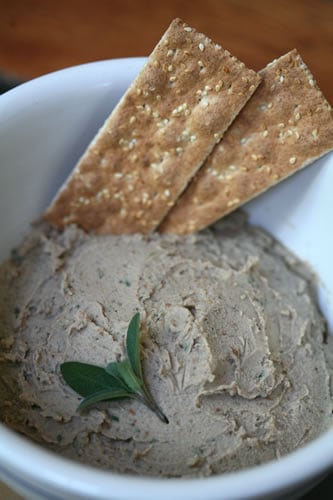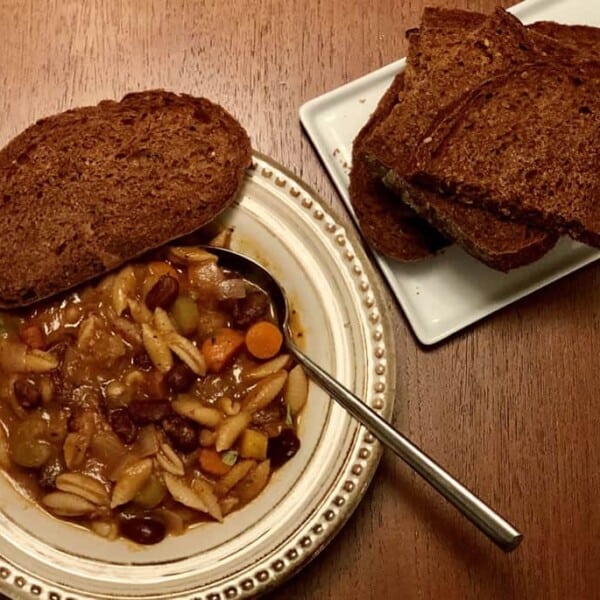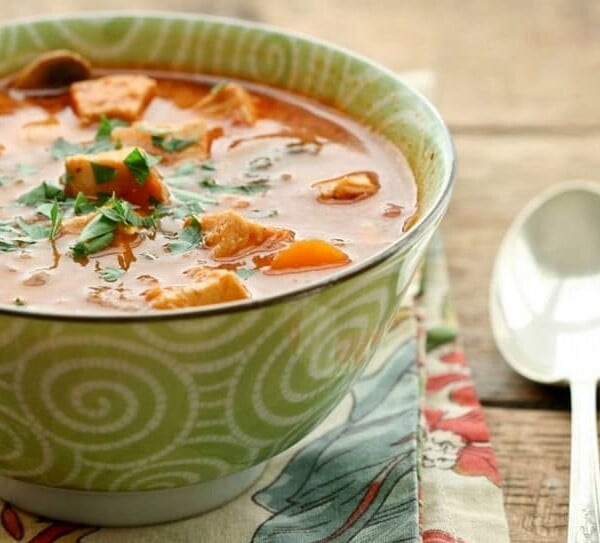How NOT to Cook Fava Beans
Mar 01, 2011, Updated Jun 18, 2014

A few months back Matty and I picked up a one-pound bag of dried fava beans. As with most beans, they’re high in protein and fiber, while being low in fat, sugar, and sodium (unless added!). Favas are also a good source of vitamins and minerals (especially folate, manganese, copper, phosphorus, magnesium, and iron).
The directions on the bag said they did not need to be soaked and merely to “Cook until soft.” We did a bit of googling, but most of the recipes we found called for fresh favas, and we didn’t have much luck finding more specific directions.
Turns out, if you go straight from bag to boiling, you’ll be waiting about three hours for those beans to get soft. That’s not the real problem, though: They have a tough outer shell that you’ve got to get rid of somehow. We boiled them until the bean inside was very soft, but the shell didn’t really loosen up much. So to get at the morsels inside, we Matty had to painstakingly, bean by bean, peel them apart by hand (I was busy taking photos, naturally). It was a messy process.
Turns out what we should have done was ignore the vague directions on the package, and instead soak the beans overnight. Then, after the soaking, it would have been far easier to peel them (still have to go one at time, though!). After peeling, it would have taken only about an hour or so to cook the beans the rest of the way.
Even so, our Rosemary Fava Bean Pate turned out quite lovely. Click over to Matty’s blog for the recipe and his take on the fava experience.
























I picked up a half pound of dried fava beans today to make pasta e fagioli. I’ve done it once before with pork cheek, fresh cranberry beans and ditalini. Today I planned to do it with little shells and spicy sausage, vidalia, basil, XVOO, grana, rosemary and basil. But it’s March, so there were no fresh beans at the market. The directions said: soak 4-8 hours, add to x cups of water and simmer yadi yada. Of course I’m here trying to shorten the soak time. The directions said nothing about shelling the little guys, but now that I think about it there was a fibrous, pithy membrane that shucked off with the long shell to the cranberry beans. I gave the favas an hour to soak and then manually pulled off the shells with the help of a nutcracker. Some of them came off easily, and others were a… Read more »
Edit: sorry, 1/2 kilo = 1.1 pounds dried fava
Hmm… I see this has been an ongoing discussion for almost two years. I love favas but have only eaten them fresh. Just picked up a bag of dried today. I’m thinking I might try Lou’s idea–soaking and roasting. The wine is still an integral part of the recipe.
My Italian family ate them this way. First we would soak them a few days changing the water at least once a day. Then once they are nice and plump they would get boiled. Not too much that they start to fall apart but enough so that they were starting to soften up. Then the unhealthy but good part is that you heat up some olive oil in a pan and toss the beans in with some salt pepper and of course garlic. When they start to brown you will see that many of them also split open I try to stop before too many of them are split and too mushy because I like when the bean still holds together. Get a plate and a bowl, put the beans on the plate and start eating. Pop open the shell and eat the inside. If you boil and cook too… Read more »
My mother soaked them overnight and then put them on a baking sheet. She salted them liberally and roasted them like chestnuts for about an hour. The skins popped open when squeezed and the insides were soft.
It makes no sense to me to have favas peel off, unless they are used as a snack described above. I soak mine overnight, then cook for about 45min. The outer shell is chewy but why not eat it? I am sure that’s where a lot of nutrients are [will check this up later]. This sounds like seedless grapes for Americans to me.
Off in a blender with them, salt, add spices, olive oil [or spices in hot oil first, indian style] + a great variety of optional fresh additions [finely chopped garlic, cilantro, scallions etc] = wonderful hummusy paste. Excellent texture!
It has to do with trying to make falafel patties. I’m trying to find anyone that sells the small beans pre-shelled.
Ana!
I agree with you! I have cooked dried favas twice recently, in my rice cooker after soaking them overnight andI ate the shell with the bean. I find it unnecessary to peal them. Your’s is the first post I’ve found among several searches that shares my wonder at why people want to do some much work when the complete bean must be more healthy and it’s certainly very tasty, hot or cold.
Are there any indication to the contrary, health wise? I doubt it.
best,
Will
I know! It’s like peeling tomatoes or red peppers, WHY??!!! I’ve never done it.
I just bought a bag of dried fava beans. I googled to find out if should soak them first and found you. For my surprise the bag has the beans already peeled! They are the Goya brand. I am going to make soup!
Frozen ones are great stewed with “chourico”, a Portuguese sausage.
I just moved to San Miguel de Allende Mexico an they sell fava Belen’s dried and shelled. I made split be soup moor or less with them, delicious! No soaking and took no time…… Comparatively. Add ham and dumplings……… Muy bien!
I’m Portuguese and grew-up eating spicy, stewed fava beans. Part of the fun was sucking out the soft center and putting the skins aside. It was a snack food with a glass of wine!
Ooh – that sounds great! Next time we’ll skip all the shelling and crack open a bottle instead. 🙂
That is the way I remember also. I am Portuguese and you always ate the bean after freeing it from the shell. Goes great with beer. 😉
I think favas are one of those foods where it’s best to “be with someone experienced for your first time”, like roasting chestnuts, shucking an oyster or cooking couscous. (The latter being generally easy, but the first time I saw Moroccans make couscous, I was blown away. Oh, their mint tea, too!) I learned at a couldn’t-be-more-idyllic outdoor summer dinner where the hostess had done the prep and we just got in and peeled. Similar to crab feeds, but even more colorful! And all the waste goes to the chickens!
Clearly if you had cooked the up with a nice chianti you would have been better off.
Sorry, I had to do it.
Ah, my first attempt to cook fava beans didn’t go as planned either – I did the soak, peel, then cook method, and the peeled beans pretty much fell apart as they cooked. I ended up doing a kind of fava bean-garlic puree instead of what I’d originally planned. I recently picked up a bag of small Egyptian-style favas that allegedly don’t need to be peeled, but I’ll believe it when I see it!